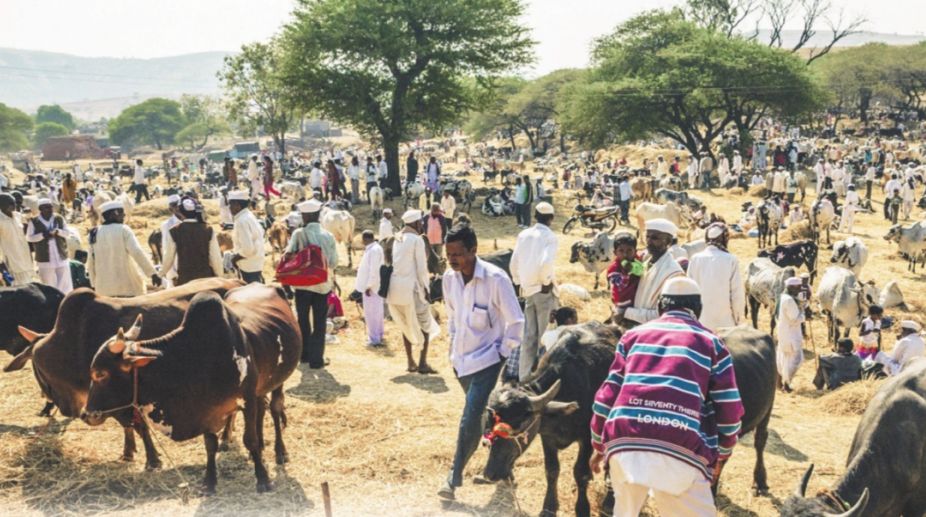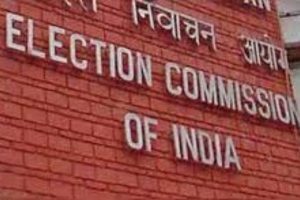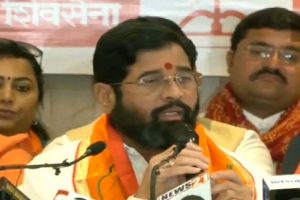On 23 May the Government of India issued rules regulating the cattle market. Kerala went ballistic and, without anyone having read or understood the rules, issued threats against the government of India. Members of the Congress party went so far as to slaughter a baby cow in public and distribute the meat to equally vicious spectators of this perverted cruelty. Kerala has no cattle markets, so God knows what they were getting upset about — except Kerala no longer needs a reason to kill somebody — dogs, cows, women, children, other party workers.
West Bengal put up a lesser howl and Tamil Nadu made a feeble protest — because they are the ones who run the most illegal cattle markets in India and supply pregnant, sick, diseased and baby animals to Kerala.
But the rest of India breathed a sigh of relief. I will explain why these rules were long overdue. If Environment Minister Dave has left a legacy, it is this rule.
After Partition, the government tried to help its farmers in different ways. One of them was establishing small village markets on government land so that farmers could sell or trade cattle to each other. The markets were tiny home-grown affairs. A villager would bring one or two animals and a farmer in the next village would buy them. The cost of the animal was low and haggling took some time but everyone went away happy. There were water troughs for the animals and trees for their shade. During the rest of the week, other markets were allowed in the same place where villagers would sell or trade vegetables, utensils and cloth to each other. It was a gentle happy place.
Over the years this has become a vicious violent area. For one thing, it is no longer on government land but on the land rented out by private people. It is no longer for farmers. There are no trees, no water troughs. Animal are often dragged there and kept tied for hours in the sun. It is controlled by a mafia of sellers and buyers and patrolled informally by police people who take a hafta in the trade. Everyone sports knives and guns.
The cows and buffaloes that are brought here are forbidden by law to be sold for slaughter —they are either babies or in the prime of life. Many are pregnant. Some are diseased with a variety of disease that range for foot and mouth disease to leukaemia. None of them are older than 16 (there is not a single old animal left in India) which is the legal age for them to be sold for slaughter.
But why do I keep saying slaughter? Because these “farmer markets” are now simply butcher markets. The law says that only kisans can buy or sell. Not a single kisan will be found anywhere near these hellholes. Small animal traders sell to butchers. The law says that not more than two can be sold to one person.
The sellers sell up to 100 to a single buyer who claims that he is a “kisan” and has fake papers to prove it — even if he does not have a single acre of land. What he will do with 100 animals is clear to everyone. The law that exists said that no trucks could come near these village markets — the idea being, that it was for local trade only. But now every one of these animal markets is surrounded by trucks and 30-60 cattle are brutally pushed into the truck and taken for slaughter — when the law is clear that no more than 6 cattle can be in one truck.
Where the local administration pretends to be strict, the trucks are parked about 500 metres away, the cattle are walked down by this “kisan” and then loaded on to the trucks. The slaughterhouses are not local. They are many districts away, sometimes even in another state. For instance, the UP butchers come to Rajasthan, the Bihar butchers come to Haryana. This has become a mafia controlled place and the district administration either looks the other way or, as in Fatehabad, Haryana, is part of this illegal cruelty. These are not weekly affairs — many of them have become permanent markets like the one in Nawabganj, Bareilly — you have to avert your eyes from the blatant violence and shut your nose to the smell of blood.
The result of the degeneration of these markets has been that there are no animals left for the farmers to buy. The prices have been driven sky-high by butchers and no actual farmer, who wants an animal for ploughing can afford one. So, more and more small farmers are driven to bankruptcy because they cannot afford mechanised vehicles on their small holdings.
All the new rules have done is to say that the district administrator, vet, forest officer, SP, the SPCA, Tehsildar, two animal welfare organisations and four other people will form the market committee. They will ensure that the markets provide shade, water, food, separate enclosures for young and pregnant animals, non-slippery flooring, proper hygiene, etc.
The market will not have more than the designated number of animals and these will be put on a board outside. Traders and purchasers shall file proper applications for trade and these can be rejected. Each market will have veterinary inspectors and each animal shall be screened for its age and for particular diseases. No animal which are sick, ill or injured will be traded and a record of each inspected animals will be made. All animals that are unfit for travel will not be allowed to do so. Each vehicle will only have the number of animals allowed by law.
No animal shall be cold or hot branded (a common practice now in these markets). No cattle will have its horns sheared off, or its udders sealed with tape to prevent calves from suckling. No animal shall be muzzled, or have oxytocin injected into it, or be hit. No animal shall be dragged along the ground, pulled up by ropes, tethered in such a way that it cannot move at all or even lick itself. No animal will have its tail twisted and broken, its ears twisted, hit on its face, have chillies rubbed into its eyes or nose.
No babies will be sold. All cattle will have the name and address of the owner and his photo. Each form shall state that the cattle have not been brought to the market for sale for slaughter. Each declaration shall be kept for 6 months by the committee and can be seen for a small payment. A record of the purchaser shall also be kept, along with an undertaking that the animal has been bought for agricultural purposes.
So what in this rule is objectionable? Butchers can still buy animals to kill — they simply cannot use the farmer’s market to do so. The price of the animal will come down and small farmers will be able to afford them again, restoring some form of wealth to the farmer. It is a good law and I congratulate the Ministry of Environment for bringing it. Farmers have been asking for such a law for the last 20 years but the Congress party was not interested. After all, their own ministers own cattle slaughterhouses, and if anyone goes to court to protest it will be a Congress lawyer.
To join the animal welfare movement contact gandhim@nic.in, www.peopleforanimalsindia.org











